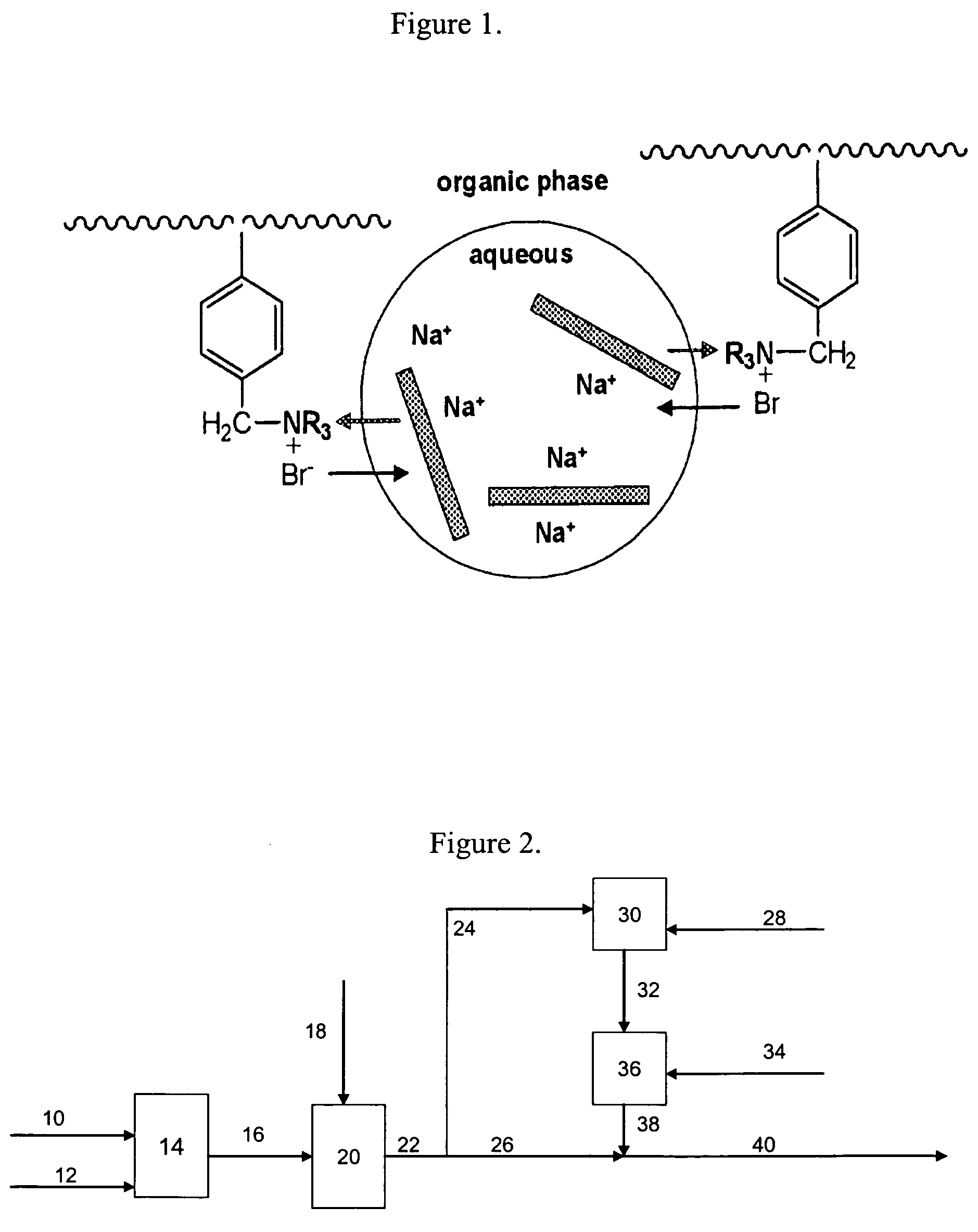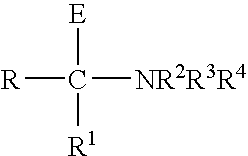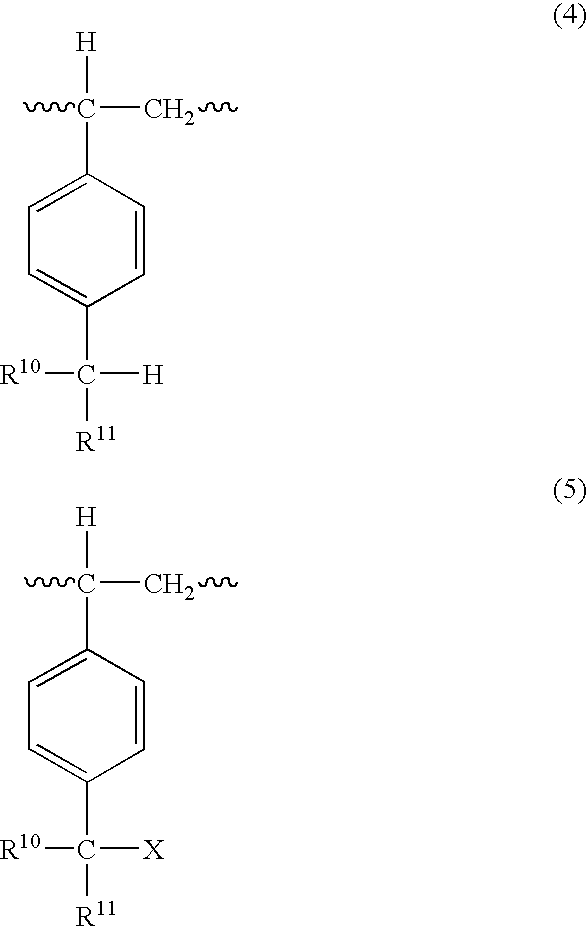Functionalized isobutylene polymer-inorganic clay nanocomposites and organic-aqueous emulsion process
a technology of organic emulsion and isobutylene polymer, which is applied in the field of low-permeability nanocomposites, can solve the problems of limited thermal stability of amines, increased hysteresis, and poor mechanical properties
- Summary
- Abstract
- Description
- Claims
- Application Information
AI Technical Summary
Benefits of technology
Problems solved by technology
Method used
Image
Examples
example 1
[0187]Fifty grams of BIMS 03-1 (10 weight percent PMS, 0.8 mole percent Br) were dissolved in 600 mL of cyclohexane in a 2-Liter reactor. The polymer cement was heated to 70° C., and 0.5 grams of dimethyl hydrogenated tallowalkyl amine (Armeen DMHTD from Akzo Nobel) were added. The reaction was kept at 70° C. for 3 hours. An aqueous slurry of CLOISITE® Na+ (2 g) and water (500 mL) was prepared separately by stirring the slurry at room temperature for 12 hours. The aqueous slurry of clay was added to the polymer cement with vigorous mixing to give a stable emulsion. The emulsion was mixed in the reactor for one hour. The product was precipitated by adding 2000 mL of isopropyl alcohol to the polymer / clay emulsion. The resulting polymer / clay nanocomposite was dried in a vacuum oven at 80° C. for 16 hours.
example 2
[0188]Fifty grams of BIMS 03-1 (10 weight percent PMS, 0.8 mole percent Br) were dissolved in 600 mL of cyclohexane in a 2-Liter reactor. The polymer cement was heated to 70° C., and 0.5 grams of dimethyl hydrogenated tallowalkyl amine (Armeen DMHTD from Akzo Nobel) were added. The reaction was kept at 70° C. for 1 hour. An aqueous slurry of CLOISITE® Na+ (106 g of 2.83 wt % slurry from Southern Clay) and water (400 mL) was prepared separately by stirring the slurry at room temperature for 12 hours. The aqueous slurry of clay was added to the polymer cement with vigorous mixing to give a stable emulsion. The emulsion was mixed in the reactor for one hour. The product was precipitated by adding 2000 mL of isopropyl alcohol to the polymer / clay emulsion. The resulting polymer / clay nanocomposite was dried in a vacuum oven at 80° C. for 16 hours.
example 3
[0189]Fifty grams of BIMS 03-1 (10 weight percent PMS, 0.8 mole percent Br) were dissolved in 600 mL of cyclohexane in a 2-Liter reactor. The polymer cement was heated to 70° C., and 0.5 grams of dimethyl hydrogenated tallowalkyl amine (Armeen DMHTD from Akzo Nobel) were added. The reaction was kept at 70° C. for 3 hours. An aqueous slurry of CLOISITE® Na+ (4 g) and water (500 mL) was prepared separately by stirring the slurry at room temperature for 12 hours. The aqueous slurry of clay was added to the polymer cement with vigorous mixing to give a stable emulsion. The emulsion was mixed in the reactor for one hour. The product was precipitated by adding 2000 mL of isopropyl alcohol to the polymer / clay emulsion. The resulting polymer / clay nanocomposite was dried in a vacuum oven at 80° C. for 16 hours.
PUM
| Property | Measurement | Unit |
|---|---|---|
| weight percent | aaaaa | aaaaa |
| weight percent | aaaaa | aaaaa |
| weight percent | aaaaa | aaaaa |
Abstract
Description
Claims
Application Information
 Login to View More
Login to View More - R&D
- Intellectual Property
- Life Sciences
- Materials
- Tech Scout
- Unparalleled Data Quality
- Higher Quality Content
- 60% Fewer Hallucinations
Browse by: Latest US Patents, China's latest patents, Technical Efficacy Thesaurus, Application Domain, Technology Topic, Popular Technical Reports.
© 2025 PatSnap. All rights reserved.Legal|Privacy policy|Modern Slavery Act Transparency Statement|Sitemap|About US| Contact US: help@patsnap.com



